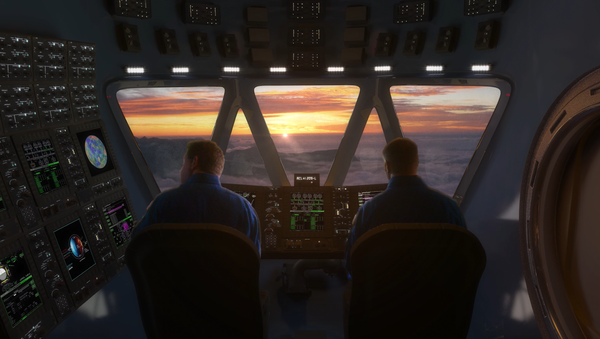Are you looking to get out of town after the holiday season? Maybe to escape a mountain of credit-card bills? If you’re looking to really escape, you might want to consider a trip to Venus. At a mere 38 million kilometers (24 million miles), it’s the closest planet to Earth. But it’s not exactly a vacation destination. With an average temperature of about 860 degrees, you’d burn to a crisp before you had a chance to get your tan on. Still, if you’re really convinced Venus is the place to be, NASA has you covered.
Wreaking HAVOC

That’s because the space agency has announced a plan for establishing a permanent city that floats high above the surface of Venus in a series of giant airships. It’s called HAVOC — short for High Altitude Venus Operational Concept. The goal, initially at least, would be to study the planet that lurks below — similar in some ways to Earth, but radically different in others.
For starters, in addition to the searing temperatures, Venus is shrouded by an opaque layer of clouds made from sulfuric acid. The atmospheric pressure will give you a bit of a squeeze as well — at the surface, it’s 92 times greater than Earth. The landmarks aren’t much to look at either. Most of the surface of the planet consists of a dry desert-scape, punctuated by volcanoes.
High In The Sky, The Living Is Easy
However, just 30 miles above those clouds made of sulphuric acid, the atmosphere is surprisingly Earth-like. The pressure and gravity are just about the same as at home and the temperature is a mere 175 degrees.
“The atmosphere of Venus is an exciting destination for both further scientific study and future human exploration,” aerospace engineer Christopher A. Jones told CNN. There’s a lot of exploration to be done.
Aside from a few probes — a Russian craft survived for 127 minutes on the planet back in 1982 — our closest planetary neighbor is largely unexplored.
Month-Long Missions
That’s why NASA scientists are so keen on the HAVOC mission.
“A lighter-than-air vehicle can carry either a host of instruments and probes or a habitat and ascent vehicle for a crew of two astronauts to explore Venus for up to a month,” NASA said in a statement.
If HAVOC ever gets off the ground the plan would be for astronauts to stay for that 30 days in blimps that would be 400 feet long and adorned with 10,000 square feet of solar panels. During their month-long sojourns, scientists could then launch probes that would study the surface of the planet below.

Lessons for Earth
One thing they’d probably look closely at is the runaway greenhouse effect that made Venus so hot and lifeless. Current theory holds that billions of years ago, early in the planet’s history, its surface was covered by a global ocean. Then, as the Sun got brighter, the amount of water vapor in the atmosphere increased. This raised the temperature, which then caused more water to evaporate — an example of a positive feedback loop.
This process likely continued until the ocean boiled away into space. Here on Earth, a similar situation may be playing out in our oceans. As more ice melts due to global warming, the more non-reflective the surface of our planet becomes. This means more heat is absorbed, leading to the same kind of feedback loop. Hopefully, our oceans won’t boil away into space, but the results could still be catastrophic. If we ever make it to Venus, we could learn some valuable lessons about keeping things cool here at home.


